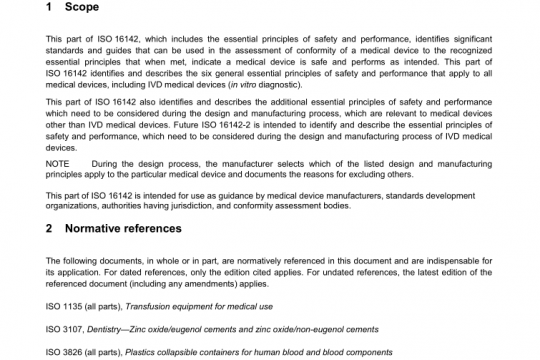AAMI PAC49 pdf free download
AAMI PAC49 pdf free download.Pacemaker emergency intervention system.
Acknowledgments The committee wishes to acknowledge the contributions of former committee member Wilson Greatbatch for his efforts in the early stages of development of this standard. The committee also wishes to acknowledge Russell Stinebring of Greatbatch, Gen-Aid, Ltd., who greatly participated in the development of this standard. Foreword This voluntary standard was developed by the AAMI Pacemaker Committee. This standard is intended to apply to a system that facilitates the emergency conversion of a conforming implanted bradycardia cardiac pacemaker (i.e., a pacemaker that has been designed to meet the performance requirements of this standard) to a simple standard operating mode. The pacemaker emergency intervention system (EIS) is intended for use in emergency rooms in hospitals or clinics where a competent attendant is on duty, but who might not have the broad expertise or equipment to handle pacemaker problems. The system is intended to temporarily change the pacemaker to a simple operating mode (e.g., VVI or VOO) until a conventional pacemaker programmer can be procured or until facilities or pacemaker-trained personnel become available for proper programming or other corrective actions. Nonconforming pacemakers, which do not contain this response capability, will not respond with the EIS emergency modes when the magnetic pulse code is applied, but could respond with the manufacturer’s magnet mode while the magnet is in place. Although this standard cannot require users to take particular actions, it is hoped that the EIS magnet assembly covered by this standard will be placed in a prominent location, so that it is readily available when needed. 2.5 entry/exit code: The entry code shall consist of: (a) application of the magnet for 3 ± 1 seconds; (b) removal of the magnet for 2 ± 1 seconds; (c) application of the magnet for 3 ± 1 seconds; (d) removal of the magnet for 2 ± 1 seconds; (e) application of the magnet for 3 ± 1 seconds; (f) removal of the magnet. 2.6 escape interval: Time between a sensed beat or a pulse and the succeeding nontriggered pulse of a pulse generator. 2.7 manufacturer’s magnet mode: The mode that pacemakers in programmed mode revert to when the magnet is applied and left in place. 2.8 nonconforming pacemaker: An implanted bradycardia cardiac pacemaker that does not meet the performance requirements of this standard. NOTE—It may, however, respond with the manufacturer’s magnet mode described in 4.3.2. 2.9 programmed mode: The mode that a pacemaker has been programmed to by the programmer that is appropriate for the pacemaker model in use. This is the operating mode of the pacemaker when it has not been switched to the manufacturer’s magnet mode by application of a magnet, or to one of the emergency modes defined in this standard. 2.10 ventricular asynchronous (VOO): A pacemaker mode in which the atrial functions and ventricular sensing are disabled. A ventricular pulse is provided at the basic rate independent of the activity of the heart. 2.11 ventricular inhibited (VVI): A pacemaker mode in which the atrial functions are disabled or absent. If the ventricular sensing function detects a beat interval shorter than the escape interval, then the pulse generator suppresses ventricular pacing. If no ventricular beat is sensed during the escape interval, then the pulse generator provides ventricular pacing at the basic rate.AAMI PAC49 pdf download.
Other IEC Standards
-

ANSI AAMI ISO 16142-1 pdf free download – non-IVD medical devices and guidance on the selection of standards
AAMI standards list DOWNLOAD -

ANSI AAMI ISO 16142-2 pdf free download – General essential principles and additional specifc essential principles
AAMI standards list DOWNLOAD


